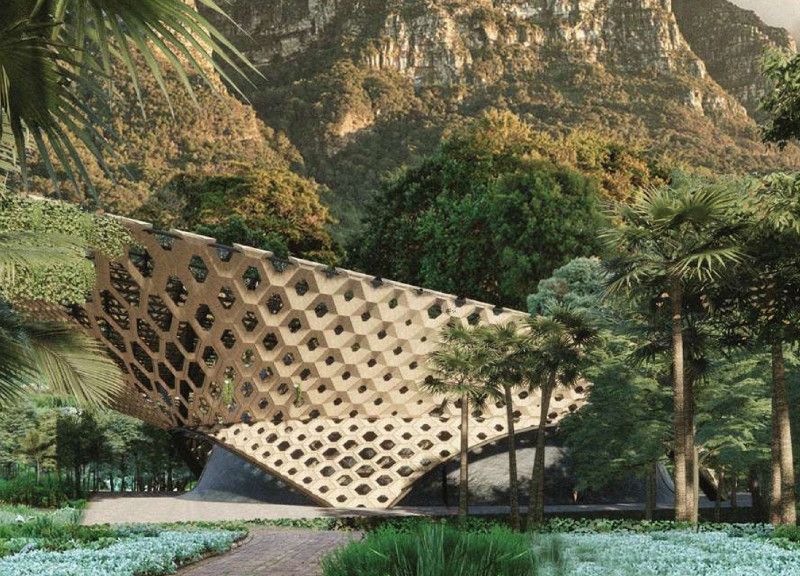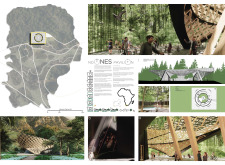5 key facts about this project
NOONES PAVILION is located in Kirstenbosch, Cape Town, RSA. It functions as a cultural space that highlights the connection between humanity and nature. The design aims to represent a shared human experience, focusing on the significance of our relationship with the environment. It also serves as a point of interest that could resonate with extraterrestrial life.
Central Monolithic Core
A central monolithic core stands at the heart of the structure. This feature serves as both a key support element and an important concept in the design. It is organized into seven different aspects of materials, which reflect how human beings have evolved and learned to interact with their surroundings. This aspect emphasizes the connection between manipulation of materials and the progression of sentient life, merging natural forms with constructed ones.
Public Plinth
The design includes a raised public plinth that extends from the natural earth. This element invites people to approach the space and encourages movement from various directions. It creates an engaging pathway for visitors, allowing them to explore both the pavilion and its context. The interaction between the plinth and the structure cultivates a relationship between the built environment and the natural landscape.
Diverse Spatial Program
A variety of spaces are included, designed for different purposes. These areas consist of a gallery and exhibition space, rooms for reflection and conservation, and places for meditation and performance. The diverse selection of spaces reinforces the pavilion’s importance as a community hub. Each area allows for interactions that foster discussions and connections among people.
The architectural design showcases a dual dimensionality, where the upper section faces the sky while the outer layer provides a touchable surface for visitors. This relationship supports natural light entering the interior, creating a link to the outside world. It allows the pavilion to be a thoughtful space grounded in the essence of nature.


















































